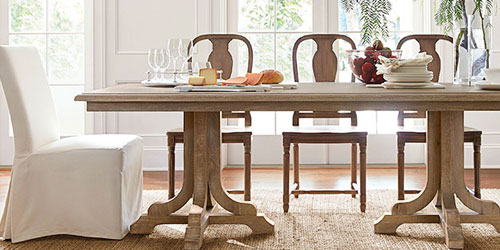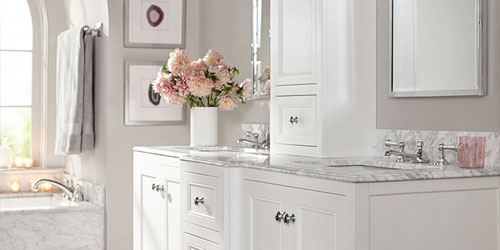Choosing Smart Media Storage for Your Living Room

Whether you maintain a beloved collection of records and VHS tapes or you relish an evening of gaming, living room media storage is an essential component in your home entertainment system. From cables and receiver boxes to remote controls and DVDs, there’s a lot to consider when designing your home media center. Fortunately, you can easily bring order to the space and make your living room feel even more cozy and inviting with media storage furniture that’s as practical as it is stylish. To choose the best media storage furniture for your living room, we’ve put together a few tips to get you started.
Assessing Storage Needs
Think about everything you want to keep in your living room media storage furniture. Do you have a collection of manuals and remotes that you want to tuck away? Do you want to be able to display your collection of vintage LPs alongside your smart TV? Are there just too many cables in plain sight? It helps to make a list of everything you plan to store so you can double check it and ensure you remember each item. Leave no stone unturned and no auxiliary cable unconsidered – taking a thorough inventory helps you better understand your needs.
Decide on Scope
Once you know exactly how much media storage you need, it’s time to consider how large you want your storage furniture to be. It’s a good idea to choose something with enough cabinets, shelves, drawers and compartments for all the things on your list. This may require you to mix and match a few different pieces to get exactly the kind of storage you want, but that’s part of the fun! Remember, too, that excess storage quickly finds a way to make itself useful. It’s totally fine to err on the side of potentially empty drawers or shelves that you can adapt later.
Think About Layout
Where do you want your media storage furniture to go? Do you want it to sit against a windowless wall? Do you need to work around a doorway? Think about your ideal location before picking out storage furniture pieces. If you want to leave room for art, go for long and low storage furniture. If you want to let your media center furniture do a lot of the heavy lifting in your living room, consider a larger storage furniture unit with ample space and open shelving where you’ll have plenty of space to store your items with flair.
For Big – and Small – Screens
The screen, whether it’s a TV, projector screen or computer monitor, is an important part of a media storage and display furniture setup. If this is the case for you, consider what kind of display you’re working with. Do you have a wall-mounted flatscreen TV? Does your monitor stand on a central plinth, or does it have two legs on either end? Make sure you have precise measurements and know exactly how your screen setup works before you choose your media furniture.
Some media storage furniture options have generously proportioned screen display cubbies that accommodate wall mounting, but others may have a screen display nook with a covered back that’s best for self-supporting models. If you’re not sure, or you think you may be upgrading in the near future, look for a modular unit with components that can be reorganized to accommodate multiple size setups.
A Secret Home Theater
Even the most devoted binge-watchers might want to de-emphasize the presence of their TV or computer screens sometimes. If you prefer to hide your TV when it’s not actively in use, choose media furniture that can conceal as much as you need it to. Some media storage and display furniture items have a cabinet feature, allowing you to shut doors over the screen display area when it’s not in use. This is an attractive way to conceal your TV or monitor and focus on fun conversation with visitors. If you have a projector screen, you can create a fun surprise by hanging a piece of artwork behind the screen to show off when the screen isn’t in use.
Untangling the Cable Cluster
No matter what your specific entertainment media setup is, you most likely have a handful of cables and cords to wrangle. Look for media center furniture that allows you to feed the cords through to the back of the piece for easy concealing. You can also drill these holes yourself if you want, but it’s helpful to stick with a pre-drilled cable hole that looks polished and neat.


